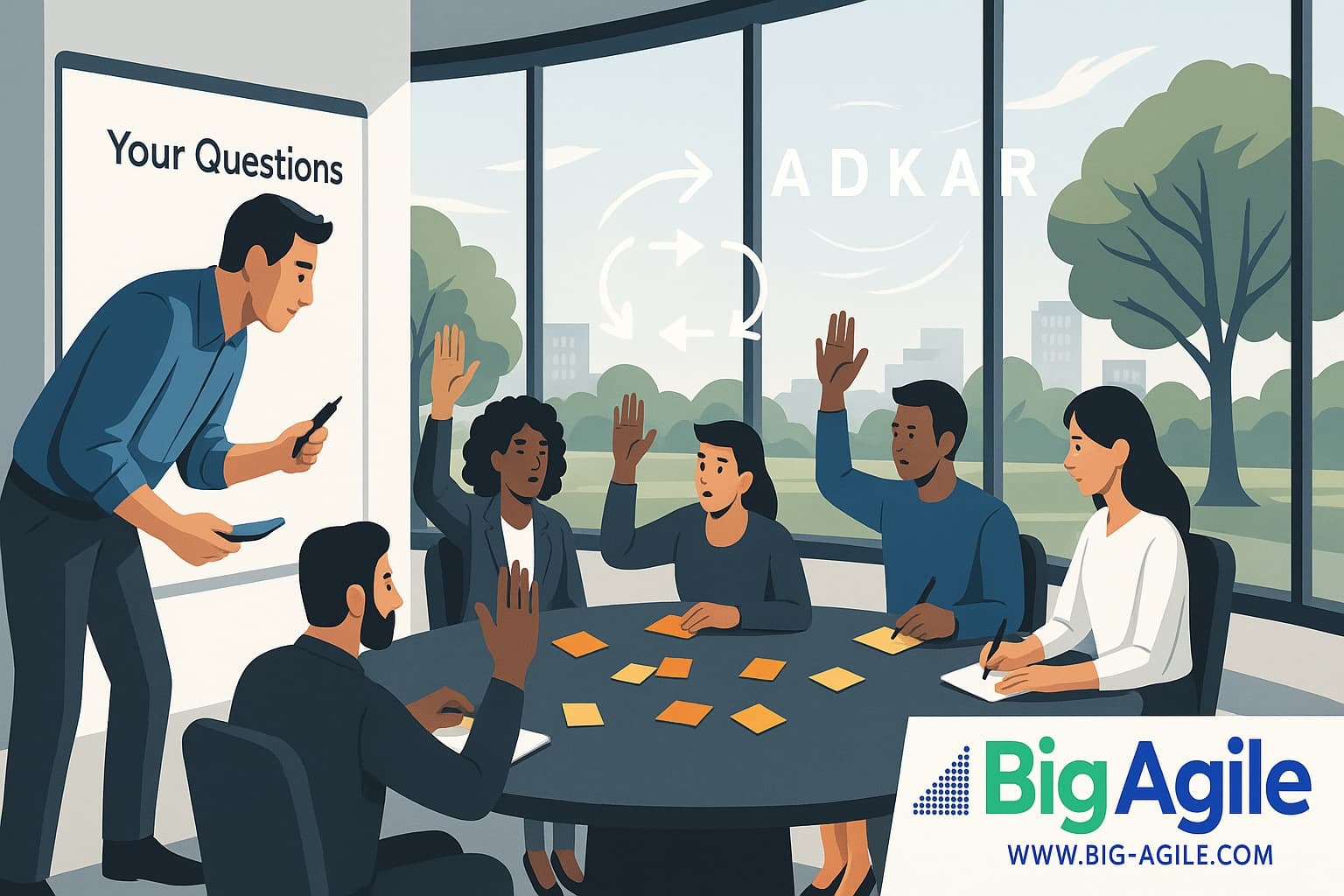
Did you know?
Ozan Varol discovered that his law students’ silence after the classic “Any questions?” was not proof of understanding; it was evidence of fear. By reframing his prompt to “That was confusing. I’m sure a bunch of you have questions, now’s the time,” he normalized confusion, opened up psychological safety, and sparked a flurry of raised hands.
This single facilitation move embodies three timeless principles:
- Normalize the struggle (“confusion is expected”).
- Create psychological safety (“it’s safe to speak up”).
- Lower the perceived social risk (“everyone’s in the same boat”).
This is facilitation in its purest form, redesigning the room’s emotional climate so learning can flow. I love his talk that centers around "Yes, there is such a thing as a stupid question". Reframing the question can be a game changer; especially in Leadership and Product Discovery.
So what?
Great facilitation serves as the ignition switch for organizational change. When leaders frame participation as ordinary, safe, and expected, resistance melts away and engagement rises—just as Varol witnessed.
- Kotter’s first steps: urgency & coalition. People rarely share risks or bold ideas if they fear looking incompetent. Psychological safety builds the trust foundation Kotter cites as essential for guiding coalitions.
- ADKAR’s “Awareness” & “Desire.” Open Q-&-A surfaces unspoken barriers (Awareness) and signals that voices matter (Desire).
- Humanocracy in practice. By dismantling the power distance in a lecture hall, Varol created a micro-model of bureaucracy-free collaboration.
For agile organizations, where ambiguity is the norm, this style of facilitation is not a “soft skill”; it is a critical flow enabler that turns passive observers into active co-creators.
Now what?
- Re-script your questions. Replace “Any questions?” with prompts that presuppose uncertainty (“I covered a lot, what feels fuzzy or risky?”).
- Model vulnerability first. Share your own confusion or a past mistake to legitimize not knowing.
- Embed safety rituals. Utilize anonymous digital stickies, round-robins, or silent brainstorms before open discussion.
- Measure the pulse. Track participation rates, not just completion dates; fewer crickets equal faster change cycles.
- Scale it. Teach every scrum master, team lead, and executive sponsor how to facilitate brave questions, make it part of your ADKAR “Knowledge” and “Ability” build-out.
Catalyst Leadership Questions
As a leader, ask your team these questions to probe into more context. It will likely get them thinking about the holistic processes and start to map out the deficiencies. We can act more clearly once we see them and talk about them (making it safe to talk about them).
| Leader’s Question | Probing Prompt |
|---|---|
| How often do we mistake silence for alignment? | “Where have ‘no questions’ outcomes later cost us?” |
| What everyday phrases accidentally shut curiosity down? | “Which status‐update words trigger eye‐rolls?” |
| Where is psychological safety weakest in our value stream? | “Which meeting or ceremony has the highest fear factor?” |
| How do we reward the first question, not the best question? | “What recognition can we give for courageous ignorance?” |
| How will we bake facilitation mastery into our change roadmap? | “Which sprint or OKR explicitly develops this muscle?” |